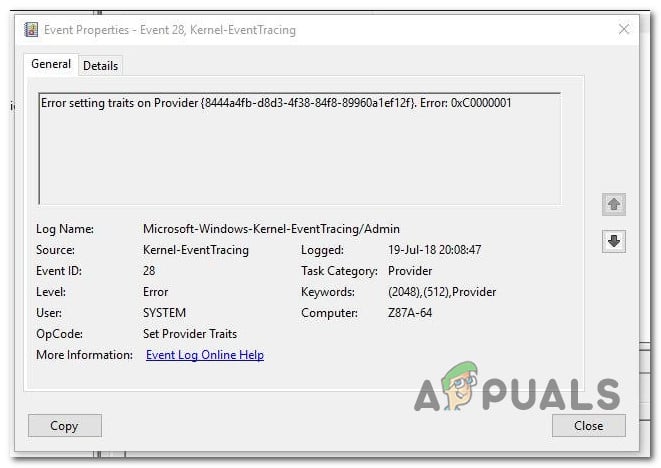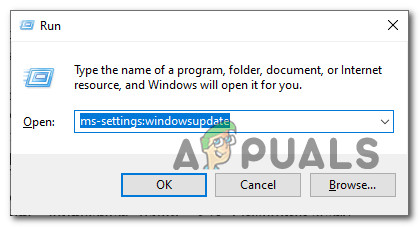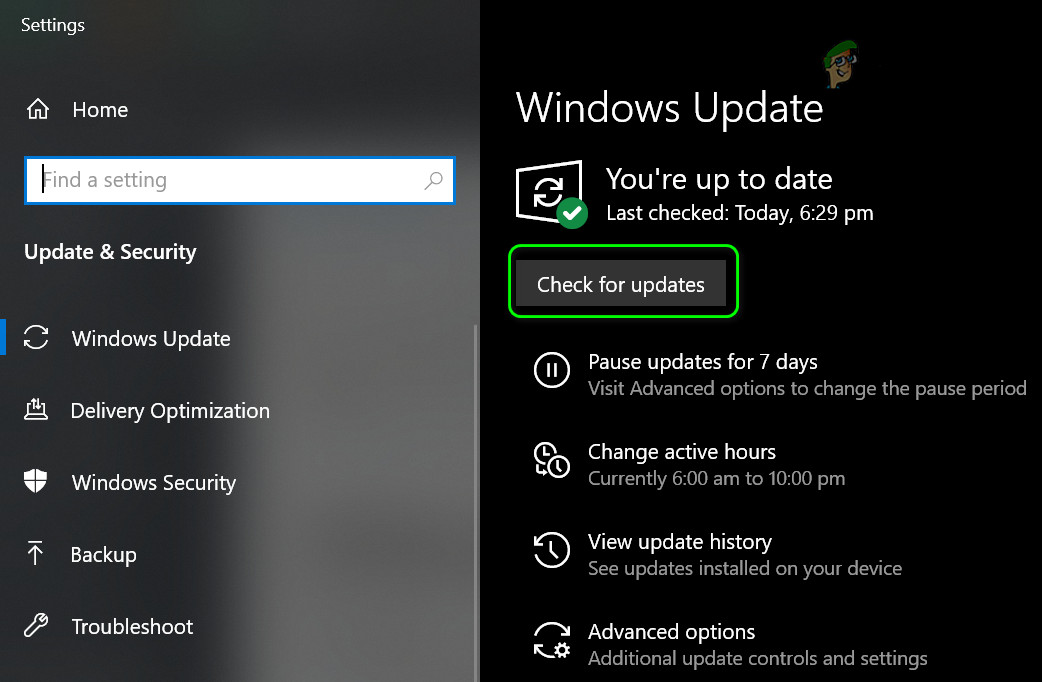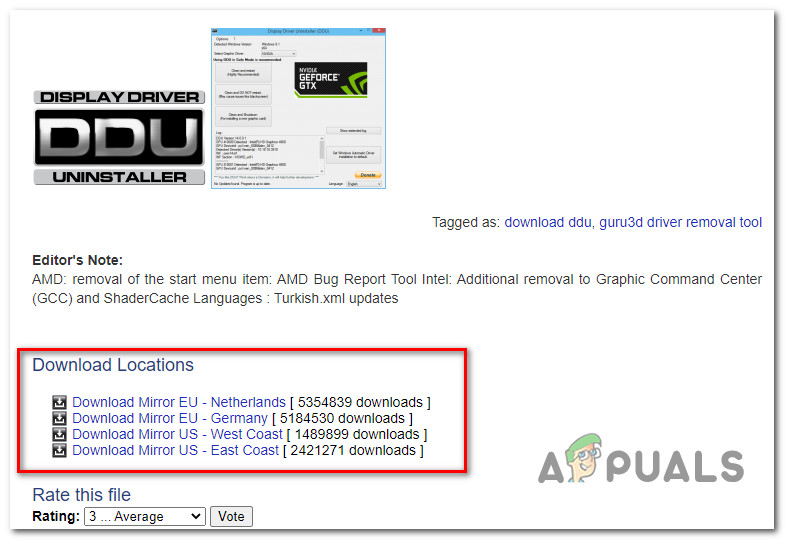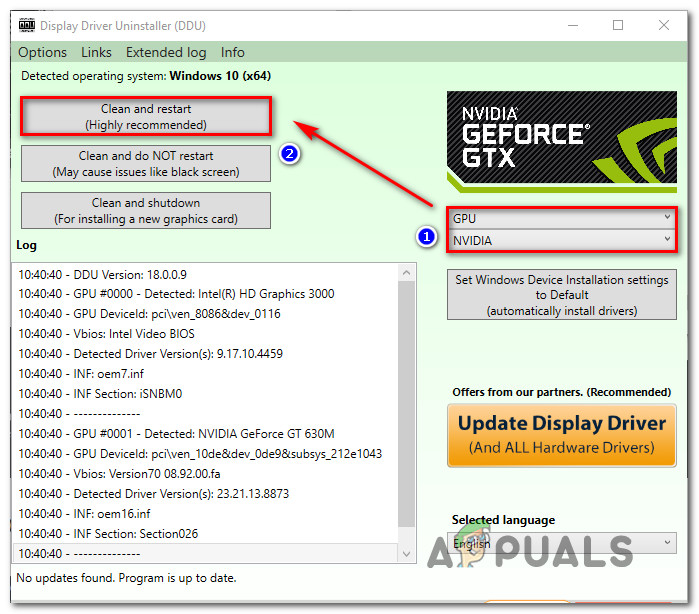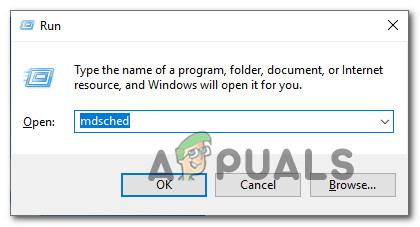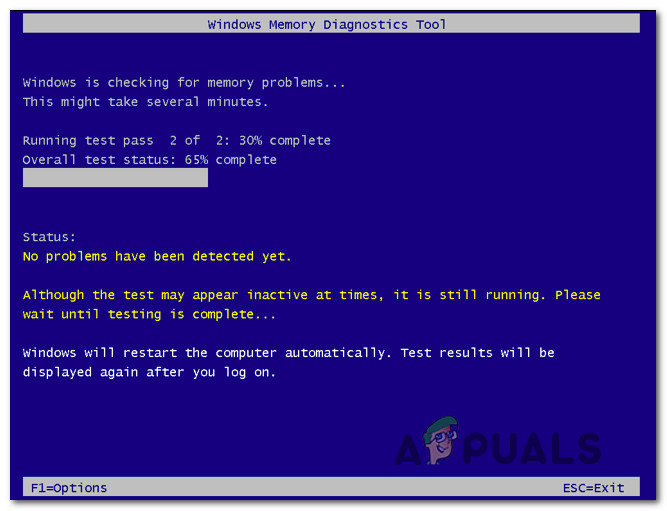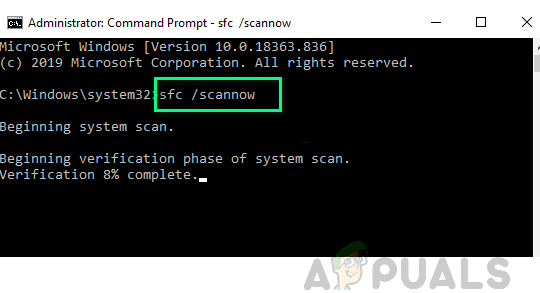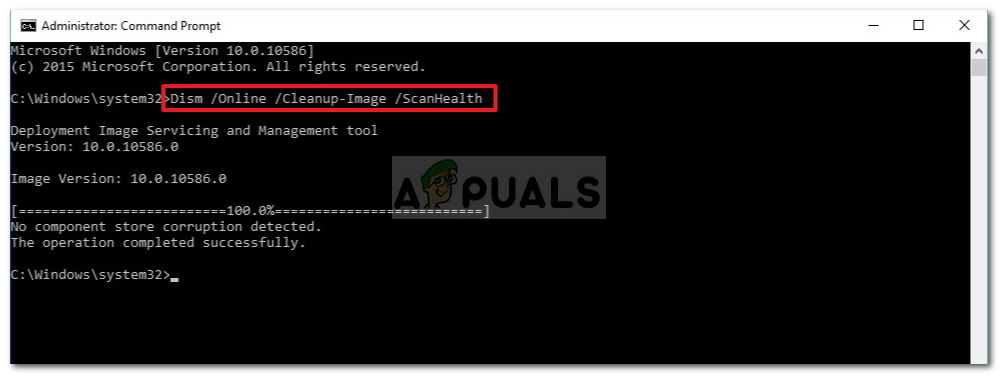After investigating this particular issue thoroughly, it turns out that there are several different causes that might be responsible for the apparition of this error code. Here’s a shortlist of potential culprits that might be responsible for this issue: Now that you know every potential scenario that might be the root cause of the Error Setting Traits on Provider error message, here’s a list of potential fixes that other affected users have successfully used to fix this problem:
Method 1: Installing every pending Windows Update (if applicable)
As it turns out, some affected users have reported that in their case, the problem was fixed once they have installed every pending Windows update that was waiting to be installed. If you’re Windows 10 computer is not up to date, start by installing every pending update until you bring your computer up to date Note: In case you have already installed every Windows update available to your specific version, move down to the next potential fix below. Here’s a quick step-by-step guide that will walk you through the entire process of installing every pending update on your Windows 10 computer: If the same problem is still occurring, move down to the next potential fix below.
Method 2: Cleaning Residual GPU driver files and Reinstalling it
According to some affected users, you can expect to see the Error setting traits on Provider {8444a4fb-d8d3-4f38-84f8-89960a1ef12f} issue due to some inconsistency with your GPU driver. In most documented occurrences, this problem is reported to occur after the installation of a new driver version. If this scenario is applicable, you should take the time to install and use a 3rd party utility called Display Driver Uninstaller (DDU) to remove the current GPU driver completely and every associated dependency in order before clean installing the latest version from scratch. In case you’re looking for step-by-step instructions on how to use the DDU utility to clean potentially corrupted GPU driver files before installing the dedicated GPU drivers again, follow the steps outlines below: If the same problem is still occurring, move down to the next potential fix below.
Method 3: Investigating / Replacing RAM Modules
As it turns out, another potential issue that might be responsible for the apparition of the Error setting traits on Provider {8444a4fb-d8d3-4f38-84f8-89960a1ef12f} error message is a failing memory stick that is preventing temporary data from being stored temporarily. However, before you go ahead and decide to replace your RAM sticks, you should take the time to confirm that you are actually dealing with a bad memory. To do this, you can use the Windows Memory Diagnostic tool to perform a stress test on your RAM and see if you’re dealing with some type of failing hardware. To make matters easier for you, follow the instructions below to test your RAM using the Windows Memory Diagnostic tool: If the scan you just did inside the Windows Memory Diagnostics tool didn’t reveal any underlying issue with your RAM, move down to the next method below for additional methods of fixing the Error setting traits on Provider {8444a4fb-d8d3-4f38-84f8-89960a1ef12f}.
Method 4: Repairing System Files using SFC & DISM
Keep in mind that this particular issue is sometimes associated with some type of system file corruption, so the next step (if all the methods above have failed or where not applicable) is to run a couple of utilities that are capable of fixing corrupted system files. If you haven’t done this already, you should take the time to run SFC (System File Checker) and DISM (Deployment Image Servicing and Management) scans in quick succession to identify and fix superficially corrupted OS files that might contribute to the apparition of the error setting traits on Provider {8444a4fb-d8d3-4f38-84f8-89960a1ef12f} events in Event Viewer. For the best results, we recommend running both utilities in quick succession in order to maximize your chances of fixing the corrupted instances. Start with an SFC scan since this process is generally quicker and doesn’t require you to maintain a stable Internet connection. Note: keep in mind that once you start this scan, you should not close the elevated CMD prompt until the operation is complete to avoid the creation of logical errors on your HDD or SSD. Once the SFC scan is complete, restart your computer and initiate a DISM scan once the next startup is complete. Note: Before you launch this type of scan, ensure that your computer is connected to a stable Internet connection. After the second scan is complete, restart your computer once again and see if the creation of new Event Viewer events with the Error setting traits on Provider error has been fixed. If the same problem is still occurring, move down to the next potential fix below.
Method 5: Resolving the Power draw issue (if applicable)
In case the Event Viewer with the Error setting traits on Provider also contains mentions of the Kernel-Power 41 (63) error, your system probably creates these type of events due to a power draw issue – You’re probably experiencing this because your system is unable to draw enough power to sustain every connected component and peripheral. If this particular scenario is applicable, you have 3 potential ways of fixing the issue:
Disconnect non-essential peripherals – If you have a lot of peripherals with the potential to draw power from your PSU, start by disconnecting the ones that are not essential and check Event Viewer to see if you spot any new instances of the error.Get a USB hub with an external power supply – If you’re experiencing this issue on a laptop/ultrabook or you don’t plan on spending money on a premium PSU, a cost-effective alternative is to go for a USB hub that draws power from external sources. This should take the load off your PS and stop the creation of new errors of this kind.Get a more powerful PSU – If you’re encountering the Error setting traits on Provider on a desktop configuration and you’re certain this issue is occurring due to a power draw issue, the long-term solution is to go ahead and get a more powerful PSU to support your components and your component peripherals.
How to Fix Error 0x8007016a ‘Cloud File Provider Is not Working’Fix: Cannot Connect to WMI Provider on Windows 10Fix: WMI Provider Host (WmiPrvSE.exe) High CPU Usage On Windows 10Fix: Error Code 0x8019019a when setting up Yahoo Mail in Windows 10 Mail App
